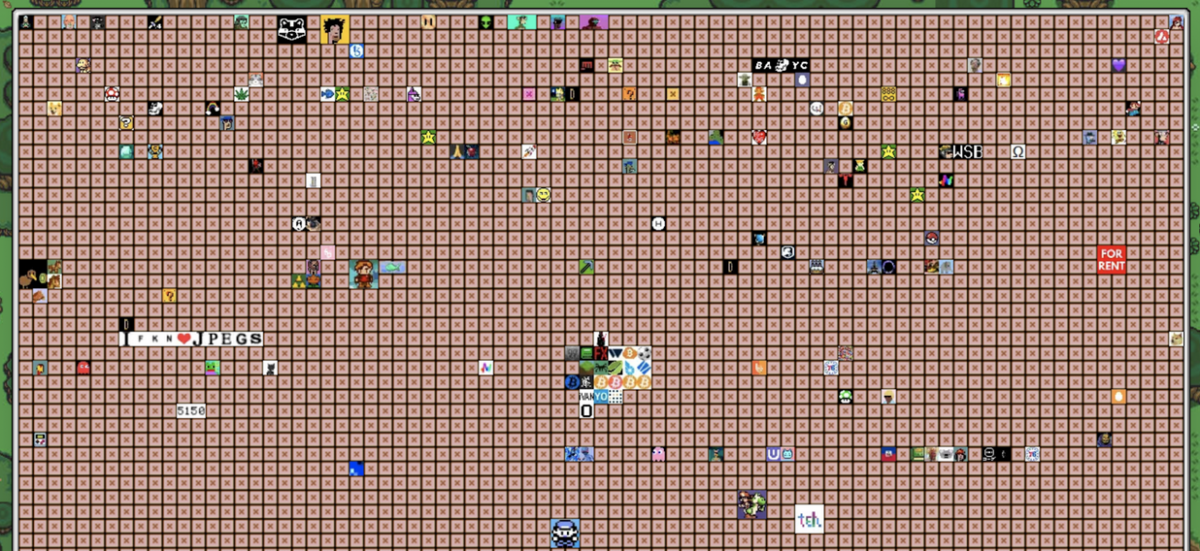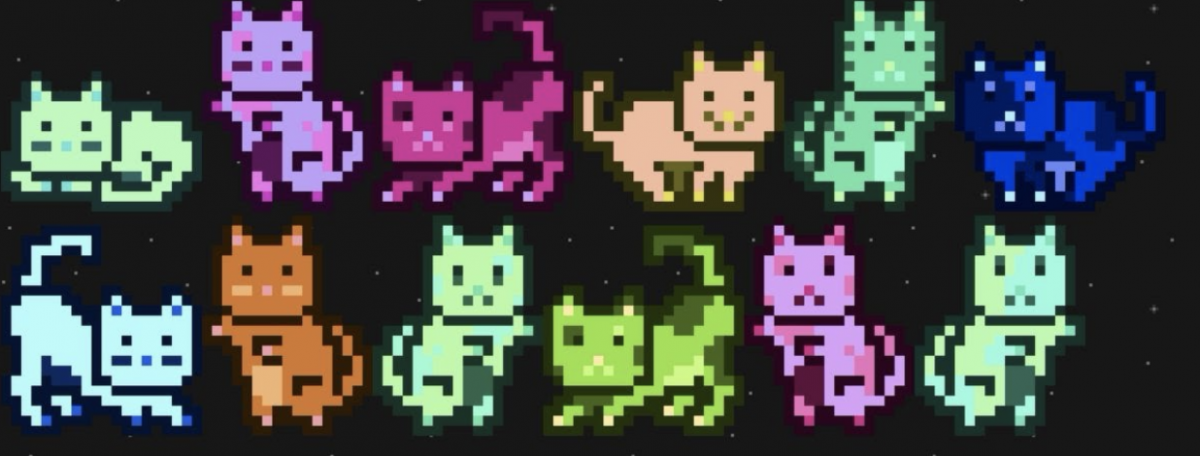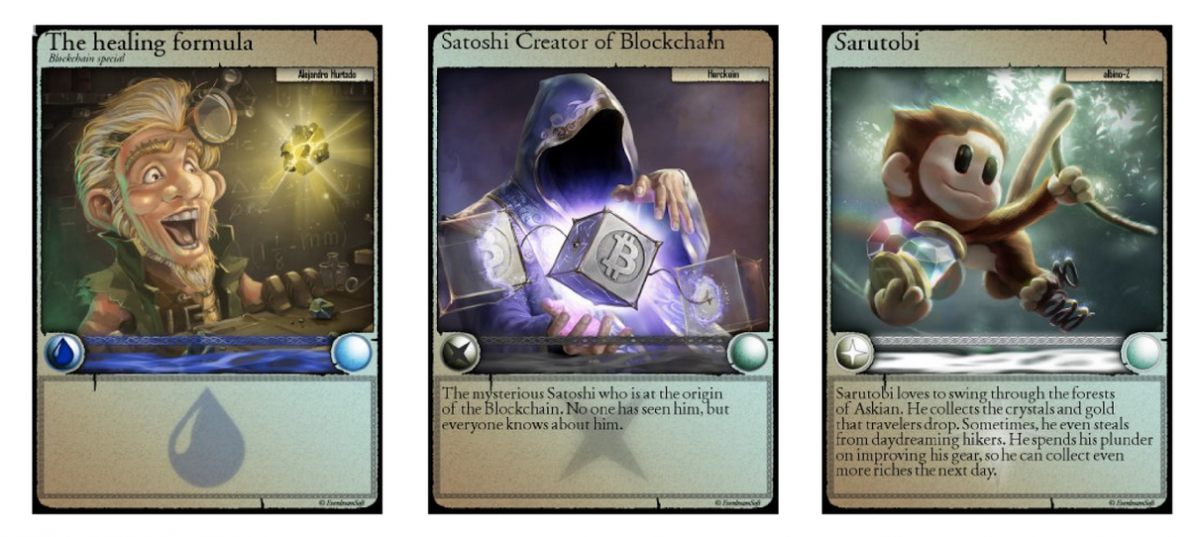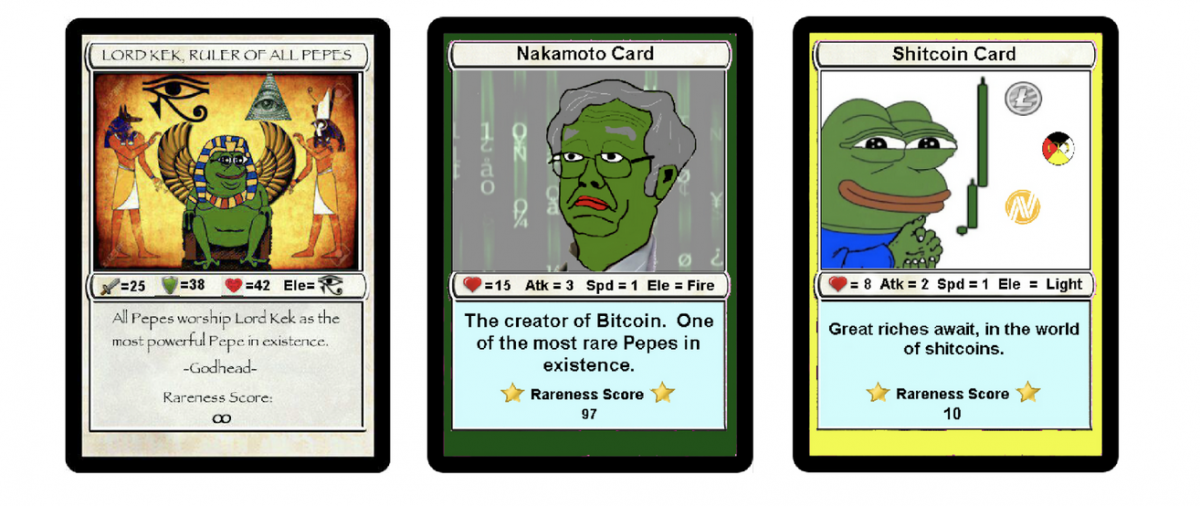12 Historical NFTs That Shaped the Foundation of Web3
NFT archaeology is a new field of study where individuals seek to uncover the NFT projects that laid the foundations of modern culture. This work is essential, because all modern NFTs are built on the groundwork initially laid by these early relics. As an NFT archaeologist, I’ve spent a lot of time doing on-chain research and digging up old projects on Ethereum, Bitcoin, and Namecoin.
However, although having an early mint date matters, what’s truly important is whether a project innovated or pushed the space forward.
The recent excitement around CryptoSkulls, the second 10k PFP (profile-picture) project ever, has sparked a lot of new interest in historical NFTs. After analyzing hundreds of projects, I have identified ten that are the most historically significant. This list will help newcomers learn about some of the most iconic early NFTs.
12. Linagee Name Registrar (August 8, 2015)

In October 2022, NFT archeologist Mason Keresty was working to decompile every contract on the first 300,000 blocks deployed on the Ethereum blockchain. And he had one goal in mind: to discover the oldest NFTs on record on the digital ledger. Perhaps his most notable discovery was the Linagee Name Registrar, which was dated just one week after Ethereum’s initial public launch. But is this the first NFT in existence? Not quite.
To date, the Linagee Name Registrar currently possesses the oldest known smart contract on Ethereum. So what is it, exactly? In contemporary terms, it could most closely be likened to the Ethereum Name Service (ENS) — a simple service that eliminates the need for users to input overlong IP addresses or crypto wallet addresses to exchange wallet information with each other. While not quite an NFT in the traditional sense — it predates the entire NFT movement by several years — it does possess the underlying technology that played a significant role in the popularity of NFTs today.
11. Quantum (May 2014)

Minted during the early stages of blockchain technology, Quantum is most commonly cited as the first NFT ever created. Digital artist Kevin McCoy minted Quantum on the pre-Ethereum Bitcoin offshoot Namecoin in 2014, where it lay forgotten for years until it went up for auction at Sotheby’s and sold for more than one million dollars in June 2021.
Following the million-dollar sale, its legality was called into question by experts that noted a specific quirk about Namecoin. Namely, how users need to renew whatever is minted on the Namecoin blockchain every 250 days to retain ownership. Before McCoy’s successful sale of Quantum, the NFT had been left unrenewed by him for years. This enabled a completely new entity — Free Holdings, Inc — to reportedly scoop up the ownership rights for the oldest NFT. Currently, the sale still stands, with McCoy successfully bringing this piece of NFT history into mainstream awareness.
10. Curio Cards (May 9, 2017)

Curio Cards are a fan favorite amongst historical NFT collectors and are some of the earliest pieces of crypto art on Ethereum, predating CryptoPunks by over a month. Just as Rare Pepes and Spells of Genesis are the iconic collectible card projects on Bitcoin, Curio Cards are the same for Ethereum. There are a total of 30 different cards created by 7 different artists. Several of the most elite collectors have been able to assemble a full set.
Some may debate whether Curio Cards truly belongs on this list. I understand why, as Curio Cards didn’t necessarily innovate from a technical perspective, as there are similar trading card-style projects on Bitcoin that predate them. However, along with a few other communities, I credit them for helping squash the “CryptoPunks were the first NFT” myth that was being propagated until August of last year.
9. Pixel Map (November 17, 2016 – Ethereum)

Inspired by The Million Dollar Homepage from 2005, Ken Erwin created a decentralized version of the artwork and deployed it to the Ethereum blockchain in November 2016. It’s a billboard-style project where anybody can buy a piece and change the image being displayed on the tile. In this way, the billboard becomes a collaborative piece of NFT art that is never complete. This demonstrates the power of how a general-purpose blockchain with smart contracts can be used to push the limits of what an NFT can be.
As NFTs continue to become more advanced in the future, it will become more and more clear that PixelMap was one of the stepping stones on the path from very early primitives to highly complex smart contracts. Ken even took things a step further by storing the image data for each pixel on-chain, making PixelMap one of the first fully on-chain NFTs.
8. MoonCats (August 9, 2017 – Ethereum)

These 8-bit collectible cats were the first cat NFTs on Ethereum and have a total supply of 25,440. Their creators drew inspiration from CryptoPunks, but they innovated in one major way that often gets overlooked. When you minted a CryptoPunk, you got to pick whatever one you wanted. All 10,000 had already been generated off-chain, so the first collectors to find the project quickly scooped up the rarest punks.
This was not an optimal approach.
Ponderware, the team behind MoonCats, engineered a new solution for minting a MoonCat. When collectors clicked the button to mint, they had no idea what cat the blockchain would spit out to them. By assigning the attributes of a cat on-chain, a unique cat would be generated every time, and the collector had no idea what it would look like until the transaction was confirmed. Of course, with the billion-dollar generative art NFT market we have today, we take it for granted that this is how mints work.
However, it was revolutionary when it first happened.
Interestingly, only a small number of cats were minted back in 2017, so when the project was rediscovered by NFT Archaeologists in early 2021 the contract sold out in less than 24 hours. The market cap for MoonCats went from $0 to $100,000,000. I witnessed this event play out in a Clubhouse room. As soon as I realized the significance of what had just happened, I hopped on my computer and got to work searching for long-lost NFT projects.
Three hours later, I came across Digital Zones, and my career as an NFT archaeologist began. Many other archaeologists, including Adam McBride, got started through this event as well. If anyone goes searching for the origins of on-chain generative art, their research will surely lead them to MoonCats. For that reason, they deserve a spot on this list.
7. Digital Zones (August 29, 2017 – Ethereum)

Inspired by French avant-garde artist Yves Klein’s Zones of Immaterial Pictorial Sensibility from 1959, a total of 101 Digital Zones of Immaterial Pictorial Sensibility were released onto the Ethereum blockchain in 2017 by Canadian artist Mitchell F Chan. When I look back at the timeline of how crypto art evolved, it’s clear that the release of these Digital Zones was a pivotal moment. Mitchell understood, at a very deep level, that the real innovation in NFTs was not simply linking the blockchain to an image, but using the blockchain itself as the medium. And there is no more powerful way to demonstrate this point than to forgo the image entirely.
Yes, that’s correct. There is no JPEG.
The receipt images you see above are just for the wrapper, not the original tokens. The art has no visual component and is invisible. As if this wasn’t epic enough, Mitchell encoded a ritual function into the smart contract. In a 34 page Blue Paper, he outlined the only way to truly own the art. How? To call this ritual function, at which point your token is burned and the art becomes incorporated into your sensibility. This speaks to many people, as a commentary on ownership is where the art and financial worlds intersect.
Digital Zones is widely regarded as one of the most complex pieces of crypto art. All future works that involved writing code on-chain, such as Autoglyphs, CryptoArte, Chromie Squiggles, and Fidenzas, built of the foundation that Mitchell laid. Digital Zones was ultimately the first piece of conceptual art on Ethereum and demonstrated that a smart contract could be used to push the boundaries of what an artist could create.
They have garnered respect from both the crypto and traditional art communities and have fetched prices as high as $1,532,500 at Sotheby’s.
6. Eggs (July 27, 2014 – Namecoin)

Namecoin was a fork of Bitcoin. It was also the only other project that Bitcoin’s creator, Satoshi Nakamoto, worked on. It was released in 2011 to serve as a decentralized name registration service, similar to the ENS names that we know and love today. A few years later, in 2014, people realized that they could tack metadata onto their names as a decentralized key-value pair. Some decided to attach a profile image to their names. Thus, the very first PFPs were born.
Of the PFPs registered, 277 were the default Twitter avatars known as “Twitter Eggs.” Eggs come in 14 different colors, and collectors have identified them as some of the earliest on-chain collectible NFTs and PFPs. Egg holders have recently formed a DAO, and the community continues to grow stronger every day.
5. SaruTobi (May 6, 2016 – Bitcoin)

On December 19th, 2014, a young iOS developer named Christian Moss released a game onto the App Store called SaruTobi. You tapped the screen to spin a monkey to see how far you could get him to fly in the game. Christian wanted to let SaruTobi players purchase in-game items with Bitcoin, but Apple didn’t allow it. So instead, he let players collect small amounts of Bitcoin as they played.
And just like that, one of the first play-to-earn games was born.
Several years later, Christian heard about what EverdreamSoft was doing with tokenized gaming assets in Spells of Genesis, and he decided to do the same by releasing NINJASUIT for SaruTobi. It became the first NFT skin, the first NFT power-up, and it marked the first instance of an NFT being used in a play-to-earn game.
But the story doesn’t end here. Christian realized that he could attract Spells of Genesis users over to his game by offering use of their game items. Specifically, he could link their Counterparty mobile wallet to SaruTobi, and SaruTobi could read what tokens they had in their wallet. Based on their token inventory, he could then grant access to various features in the game. In June of 2016, Christian implemented this functionality by making the Spells of Genesis SATOSHICARD, SARUTOBICARD, and CNPCARD playable in Sarutobi.
This marked the first instance of an NFT becoming interoperable between two independent games. When the three Spells of Genesis cards were used interoperably in SaruTobi, the first crack in the walled gardens of the multi-trillion dollar gaming and social media industries appeared. And from the ashes of its Web 1.0 predecessor, the metaverse was born. That said, the significance of this moment won’t be fully understood until the walls of the gaming and social media industries fully crumble.
4. Spells of Genesis (March 11, 2015 – Bitcoin)

Spells of Genesis is a blockchain trading card game built on top of Bitcoin. Each card contains a piece of art representing a historic moment in blockchain history. When EverdreamSoft, the makers of Spells of Genesis, released FDCARD, it became the first-ever tokenized gaming asset.
It marked the beginning of a rising tide that would eventually lead to gamers beginning to reclaim power from the centralized governing bodies to which they are still, in many ways, beholden. The importance of this moment can’t be overstated, as it ushered in a new era of gaming where players have true ownership of their digital assets. When you trace back the origins of blockchain gaming, all roads lead to Spells of Genesis.
3. CryptoKitties (November 23, 2017 – Ethereum)

Breeding these cute little cats became so popular at the peak of the crypto bubble in 2017 that they literally “broke” Ethereum by driving gas prices up so high. This was the first instance of a blockchain game going viral, and thanks to all the hype that surrounded it, the term “NFT” was coined.
If that’s not enough, CryptoKitties was also the first ERC-721 token. The ERC-721 is an open standard that describes how to build NFTs on EVM (Ethereum virtual machine) compatible blockchains, and it’s the standard that most NFTs still use today.
There is a common misconception that these cats make for a poor store of value due to their unlimited supply, but this is not true. There will only ever be 100 founder cats and 50,000 Gen-0 cats, and for the hardcore collector, there are plenty of other niches to explore. Quite a few OGs – including Pranksy, Chris Dixon, Nate Alex, and the founders of Axie Infinity – got their start in NFTs via CryptoKitties. If you talk to one of the individuals who bred back then, they likely won’t hesitate to tell you about their emotional attachment to these kitties. Case in point, I still hold the cats that I bred during their peak popularity, and I plan on passing them down to my children.
2. Rare Pepes (September 9, 2016 – Bitcoin)

No list of historical NFTs would be complete without Rare Pepes. These collectible cards are a staple of internet culture and were one of the first art experiments on the blockchain, helping spawn the early crypto art movement. Amongst the nearly 1,800 cards issued across 36 series, the Series 1, Card 1 that pays homage to Satoshi Nakamoto (the person or, possibly, the group) that created bitcoin reigns supreme. It’s called the Nakamoto Card, and holding one (there are only 300 total) is the only way to gain entry into the 300 Club.
1. CryptoPunks (June 23, 2017 – Ethereum)

Even for newcomers, these little 8-bit avatars need almost no introduction, and it likely comes as no surprise to active members of the NFT community that CryptoPunks secured the number one spot on this list. Matt Hall and John Watkinson, two Canadian software developers, pioneered the 10k PFP trend that took over Twitter recently.
These avatars are viewed as both art and collectibles, and they have slowly worked their way up to becoming the most iconic NFT in the world. Some of the rarest alien ones, of which there are only nine, have fetched more than $11 million at auction.
And there we have it. The top historical NFTs. If you’re just hearing about Bitcoin and Namecoin NFTs for the first time, never fear! They can be a bit intimidating at first; however, thanks to a new cross-chain bridging technology called Emblem Vault, they can be safely traded on OpenSea. To date, Emblem Vault has more than 29,000 in trading volume, and if you want to stay up to date with the latest sales the Emblem Vault Bot is a great option.
This is far from an exhaustive list of early NFT projects. If you’re interested in learning more about early Ethereum projects, head here. And an NFTs Archaeologist named White Rabbit wrote an excellent Medium post covering the NFTs on both Bitcoin and Namecoin, which is also worth a read.
Editor’s Note: The author of this post owns some of the NFTs mentioned in this article.
The post 12 Historical NFTs That Shaped the Foundation of Web3 appeared first on nft now.

